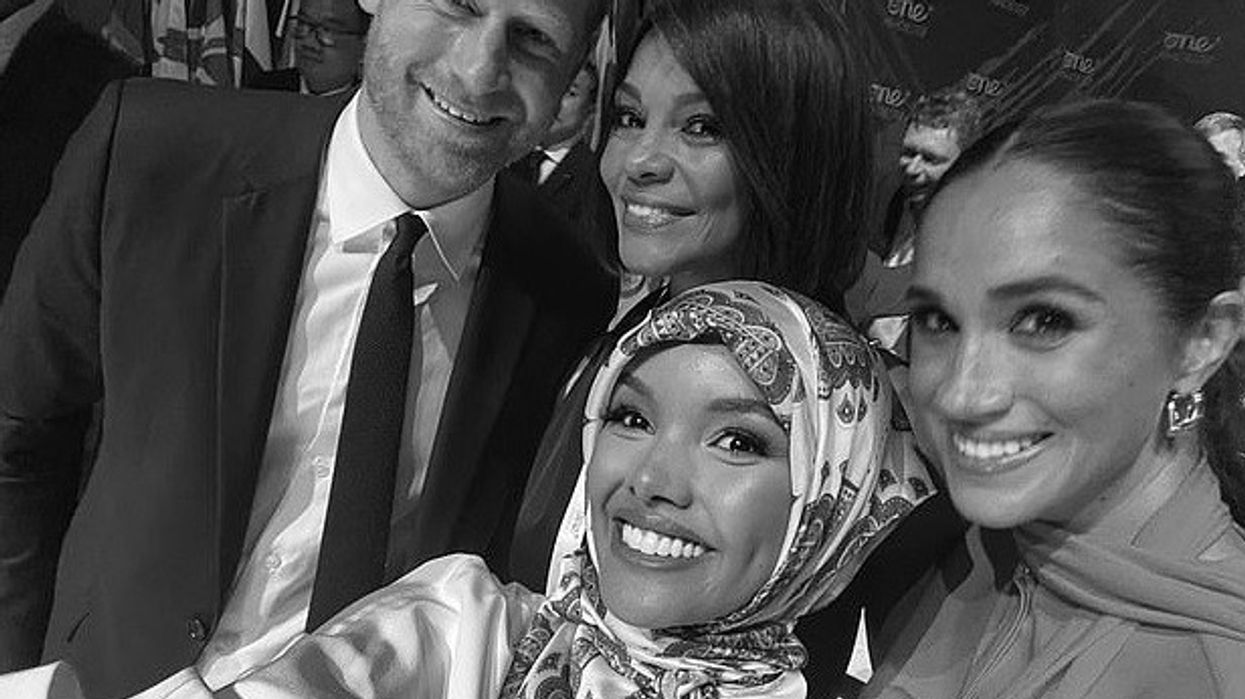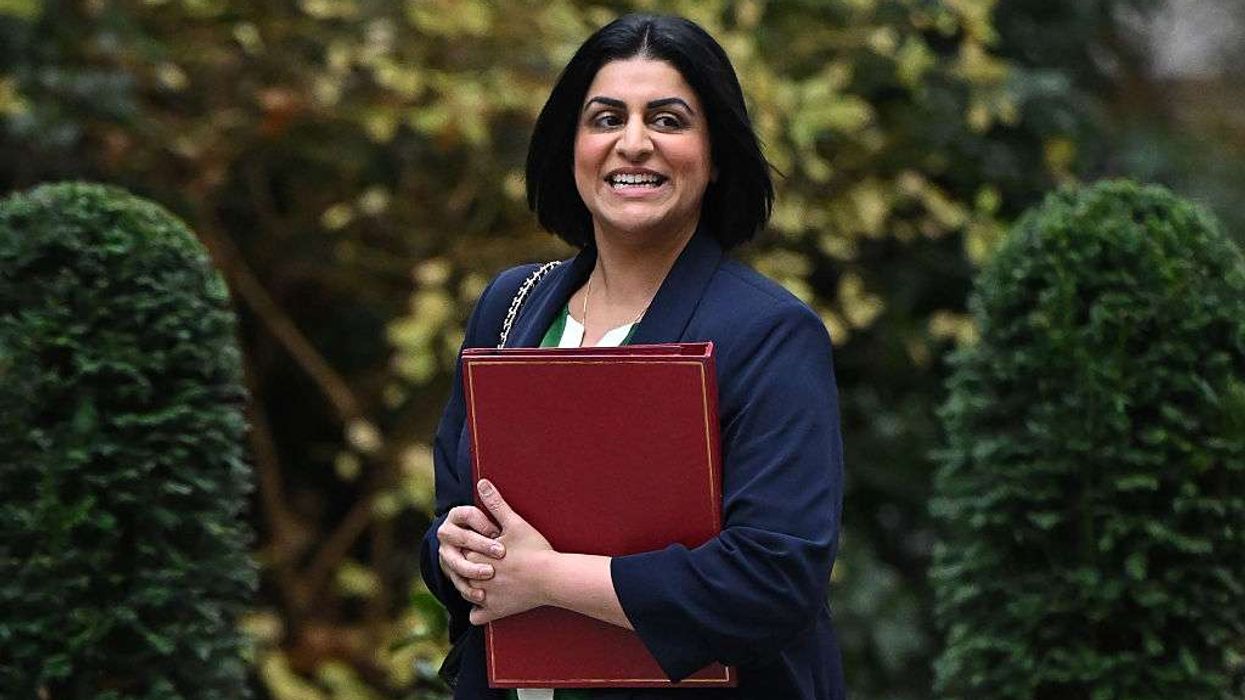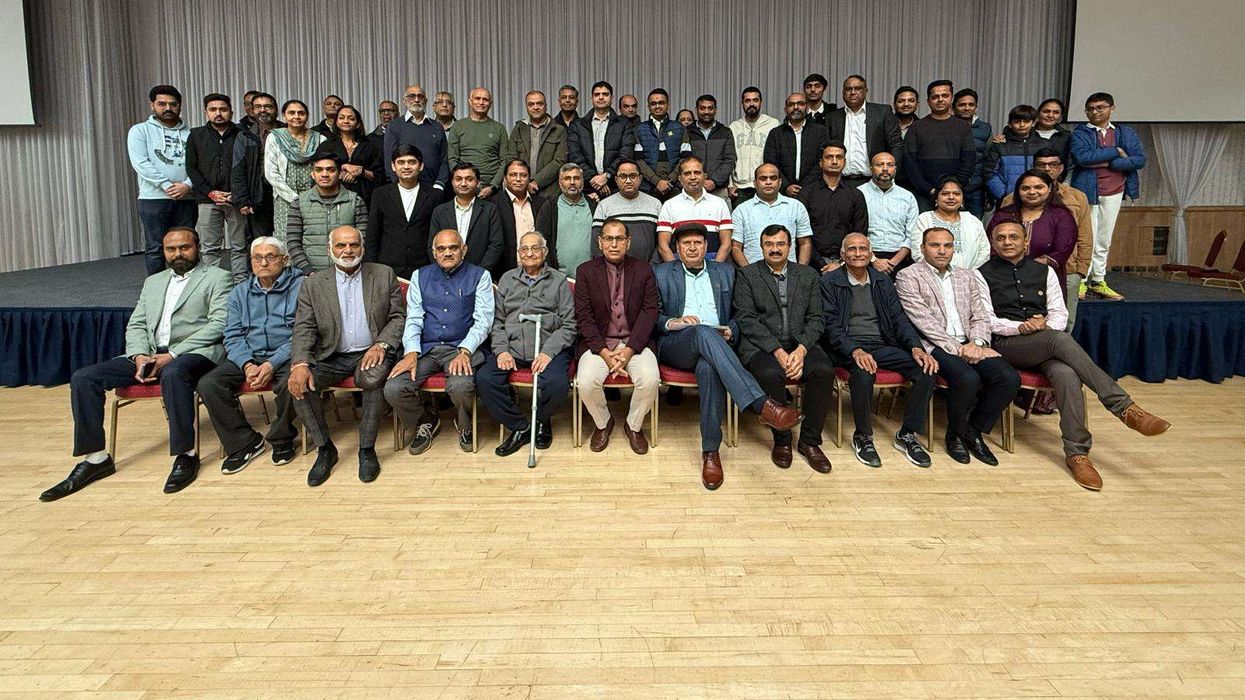History-making Muslim model Halima Aden was seen posing for a selfie with Meghan Markle and Prince Harry while attending the One Young World Summit in Manchester this evening.
The Duke and Duchess of Sussex were present to deliver the keynote address at the event at Bridgewater Hall. The royal couple was pictured taking a photograph with Halima after Meghan’s speech.
The speech is reported to be Meghan’s first speech in the UK since the Megxit which was more than two years ago.
The Duchess of Sussex supposedly gushed about Prince Harry and the “life-changing” implications of becoming a mother to their son Archie.
Meghan was seen hugging Halima, who is a consultant to One Young World.
The 24-year-old shared the picture to Instagram with the caption that read: “This is what One Young World is about!! Stand up for young world leaders who embark on this journey to change the world! Plus, meeting Meghan and Prince Harry was so amazing. She is more than inspirational.”
The Somali counselor reportedly moved to the US when she was seven - she was born in a refugee camp in Kenya and was the first hijab-wearing woman to enter the Miss Minnesota pageant.
She first shot to worldwide fame at the age of 19 when she was hailed the first supermodel to don a hijab.
Halima also became the first woman to pose in a burkini for Sports Illustrated and is said to have quit the runway because it “compromised her religion.”
The ex-supermodel who has fronted campaigns for Rihanna and Kanye West's clothing labels, was seen wearing a flowy white blouse, and wide-leg black trousers as she huddled for a photo with the highly anticipated keynote speaker.
Last year Halima revealed that she had quit the fashion industry to give it a “taste of its own medicine” - claiming they treat models like they are “disposable” and “replaceable.”
Speaking about her claim, she is quoted as saying, “So I wanted to give the fashion industry a taste of its own medicine.”
She adds, “Thank you for these incredible four years, but just like you churn through all these bright, young people, I'm going to move on with my life and replace [modelling] with something better.”
Speaking to the BBC previously, Halima reportedly told of feeling horrified when she found herself featured in the same magazine which included an image of a naked man inside.
She is reported to have said, “Why would the magazine think it was acceptable to have a hijab-wearing Muslim woman when a naked man is on the next page?”
She also admitted of feeling forced to “compromise” her religion.
When asked whether she has fallen out of love with fashion, Vogue's first hijab-wearing woman supposedly said, “Oh, just a little bit.”
She recalls how her hijab seemed to shrink with every shoot once she started getting styled by stylists - to the point in which she was asked where her hijab was.
She is quoted as saying, ‘Despite me saying, "Don't change yourself, change the game", that was exactly what I was doing,' she continued, adding how one magazine cover made her look like a 'white man's fetishised version' of herself.
“I'm not saying it's not right for other Muslim, hijab-wearing women, I'm saying it was not right for me. I wear a hijab, I'm a Muslim, I'm Somali, so yes, all these identities set me up to be the perfect token to check all the boxes. I felt like one of the biggest tokens in the industry. I always felt like an outsider in my own career.”
During her glamourous career Halima has modelled for the likes of Marc Jacobs, Alberta Ferreti and Fenty. She has also graced the covers of Vogue Arabia, CR Fashion Book, Allure, and British Vogue in a hijab.













